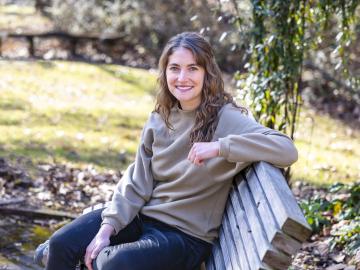Filter News
Area of Research
- Biology and Environment (9)
- Chemistry and Physics at Interfaces (1)
- Clean Energy (8)
- Energy Frontier Research Centers (1)
- Functional Materials for Energy (1)
- Fusion and Fission (2)
- Materials (1)
- Materials Synthesis from Atoms to Systems (1)
- Materials Under Extremes (1)
- National Security (8)
- Supercomputing (1)
News Type
News Topics
- 3-D Printing/Advanced Manufacturing (3)
- Advanced Reactors (1)
- Artificial Intelligence (1)
- Big Data (1)
- Bioenergy (8)
- Biology (8)
- Biomedical (1)
- Biotechnology (2)
- Buildings (4)
- Chemical Sciences (4)
- Clean Water (2)
- Climate Change (10)
- Composites (1)
- Computer Science (3)
- Cybersecurity (2)
- Decarbonization (10)
- Energy Storage (2)
- Environment (11)
- Exascale Computing (1)
- Frontier (1)
- Fusion (1)
- Grid (1)
- High-Performance Computing (2)
- Isotopes (2)
- Machine Learning (2)
- Materials (3)
- Materials Science (1)
- Mathematics (1)
- Mercury (1)
- Microscopy (4)
- National Security (7)
- Net Zero (2)
- Nuclear Energy (3)
- Physics (1)
- Polymers (2)
- Security (1)
- Simulation (1)
- Sustainable Energy (6)
- Transportation (2)
Media Contacts

Cushman, a Liane B. Russell Fellow at ORNL, has been studying trees and forests in an effort to help humans care for them and improve the health of the planet. Cushman’s fellowship research at ORNL aligns with that, utilizing ground, air and space platforms to study trees and forests in the Southeast.

Although he built his career around buildings, Fengqi “Frank” Li likes to break down walls. Li was trained as an architect, but he doesn’t box himself in. Currently he is working as a computational developer at ORNL. But Li considers himself a designer. To him, that’s less a box than a plane – a landscape scattered with ideas, like destinations on a map that can be connected in different ways.

Chelsea Chen, a polymer physicist at ORNL, is studying ion transport in solid electrolytes that could help electric vehicle battery charges last longer.

Ilenne Del Valle is merging her expertise in synthetic biology and environmental science to develop new technologies to help scientists better understand and engineer ecosystems for climate resilience.

Louise Stevenson uses her expertise as an environmental toxicologist to evaluate the effects of stressors such as chemicals and other contaminants on aquatic systems.

John “Jack” Cahill is out to illuminate previously unseen processes with new technology, advancing our understanding of how chemicals interact to influence complex systems whether it’s in the human body or in the world beneath our feet.

Having lived on three continents spanning the world’s four hemispheres, Philipe Ambrozio Dias understands the difficulties of moving to a new place.

Matthew Craig grew up eagerly exploring the forest patches and knee-high waterfalls just beyond his backyard in central Illinois’ corn belt. Today, that natural curiosity and the expertise he’s cultivated in biogeochemistry and ecology are focused on how carbon cycles in and out of soils, a process that can have tremendous impact on the Earth’s climate.

Materials scientist Denise Antunes da Silva researches ways to reduce concrete’s embodied carbon in the Sustainable Building Materials Laboratory at ORNL, a research space dedicated to studying environmentally friendly building materials. Credit: ORNL, U.S. Dept. of Energy

Tomás Rush began studying the mysteries of fungi in fifth grade and spent his college intern days tromping through forests, swamps and agricultural lands searching for signs of fungal plant pathogens causing disease on host plants.




